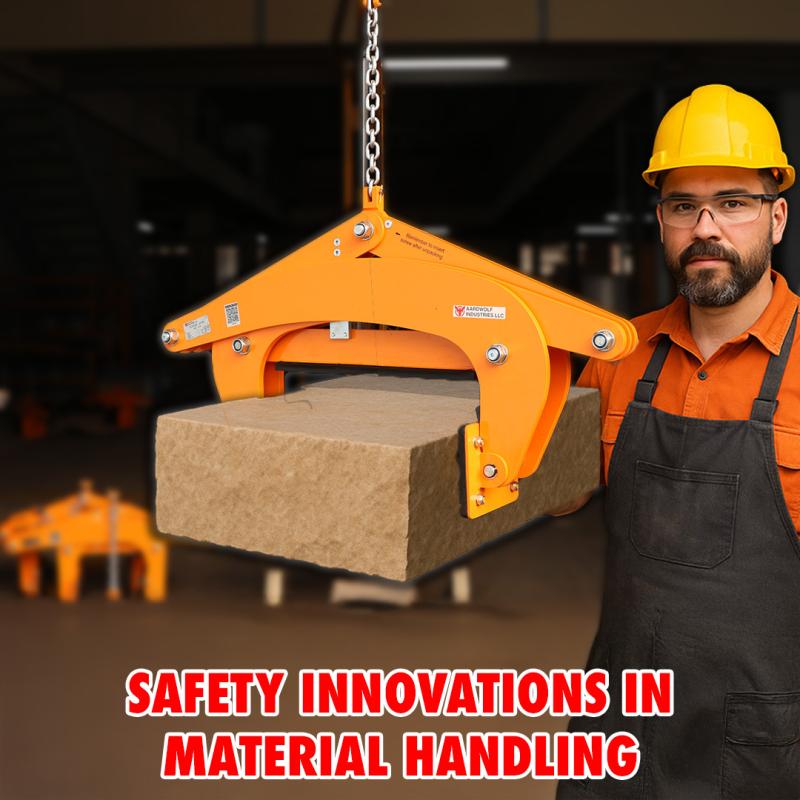



Whether you’re moving heavy slabs of granite in a stone yard or transporting components on a production line, choosing between manual handling and mechanized systems can make or break your operation’s efficiency, cost structure, and safety record. In this in-depth comparison, we’ll explore the true cost implications, safety considerations, and key equipment solutions that distinguish material handling equipment from manual labor, helping you make informed decisions for your business.
Historically, workers carried, pushed, or lifted materials by hand—often risking injury and slowing throughput. Today’s material-handling equipment ranges from simple carts to sophisticated automated guided vehicles (AGVs), enabling faster, safer, and more reliable workflows.
Manual handling refers to any process where people handle or support loads using physical effort. While low-cost upfront, manual processes incur hidden expenses:
Increased labor costs over time
Higher injury rates and compensation claims
Inconsistent throughput and quality
Purchasing or leasing mechanized solutions involves capital outlay, installation, and maintenance. For example, investing in Heavy Duty, Key Features of Aardwolf Transport Frames TF2000 may seem significant upfront but can pay dividends through reduced downtime and improved handling consistency.
Manual processes might avoid machine depreciation, but consider:
Lost workdays due to injury
Overtime pay to meet production targets
Slower cycle times in high-volume operations
A lifecycle cost analysis often shows that material handling equipment outperforms manual handling over a typical 5–7 year horizon.
Lifting heavy loads manually can lead to musculoskeletal disorders, strains, and repetitive stress injuries. In sectors like stone fabrication, handling a granite kerb incorrectly could cause serious harm.
Mechanized solutions shift risk away from the operator. Examples include:
Lifting clamps that secure loads without manual grip
Vacuum lifter solutions that adhere to slabs and plates
Ergonomic scissor lifter platforms that adjust load height
When your workflow demands secure load control, Benefits of Using Lifting Clamps ensures you select the right clamp type—be it horizontal, vertical, or block lifters—minimizing load shift and operator exposure.
Vacuum lifting provides a gentle yet powerful grip on non-porous materials. Consider the versatility of The vacuum lifting equipment is versatile for handling large stone slabs, or opt for the high-quality slab lifter when precision placement is critical.
For adjustable height and minimal footprint, This scissor clamp securely handles materials offers an ergonomic solution, reducing bending and reaching for operators.
In overhead material movement, the key advantages of portable gantry cranes include mobility, quick setup, and high load capacities—ideal for maintenance bays and modular factories.
Extend your forklift’s functionality with a Forklift Boom Attachment, enabling safe lifting of awkward loads like piping assemblies or bundled materials.
When processing large stone blocks, the block lifting method ensures secure handling. Learn How Block Lifting Clamps Improve Efficiency in Stone Processing to optimize your quarry-to-workshop workflow.
Delicate panes demand specialized handling. The glass lifters minimize the risk of breakage and reduce manual effort when installing large glass sheets.
A well-maintained jib crane can be a factory workhorse. Ensure safety by following guidelines on how to ensure your portable jib cranes are maintained in an excellent condition.
For stabilizing loads during transport, explore comprehensive ratchet tie down solutions to prevent shifting and damage.
When flexibility is key, choose a specialized material handling trolley designed for your product dimensions and weight class.
A successful implementation starts by Selecting the correct Material Handling solution. Map your process flows, identify bottlenecks, and match equipment capabilities to your unique demands.
Working with reputable material handling companies ensures you leverage industry best practices. Review in handling material handling company insights to choose a partner that offers end-to-end support.
Smart warehouses will increasingly rely on robotics, AI, and IoT for real-time inventory management. Read more in Warehouse Automation Trends 2025: What’s Next in Material Handling?.
The stone industry’s carbon footprint can be reduced through optimized logistics. Discover eco-friendly practices in Transportation of Stone Slabs and The transportation of stone.
While broader industrial workflows benefit from mechanization, specialized trades such as granite fabrication and countertop installation have unique needs:
Granite kerbs maintain structural integrity when handled correctly. Learn Why Are Kerb Stones Essential to Urban Design?.
Countertop fabrication demands precision. Compare Signs of a High-Quality Granite Countertop Installation and Countertop fabricators offer tailored solutions.
Proper countertop installation is key to longevity—follow best practices outlined in Proper countertop installation.
Advanced Tools and Equipment in Stone Fabrication ensure your craftsmanship shines—explore insights on Advanced Tools and Equipment in Stone Fabrication.
Transitioning from manual handling to purpose-built material handling equipment involves balancing upfront investment against long-term gains in productivity, safety, and cost savings. From Heavy Duty, Transport Frames to ergonomic glass lifters, the right combination of lifting equipment, conveyors, and automation can revolutionize your workflow. As the material handling industry evolves toward greater flexibility and sustainability, informed decisions today will drive ROI and competitive advantage tomorrow.
Sign up to receive the latest info on new Aardwolf products, special offers and more.
By signing up you agree to receive emails from Aardwolf with news, special offers, promotions and other information. You can unsubscribe at any time.